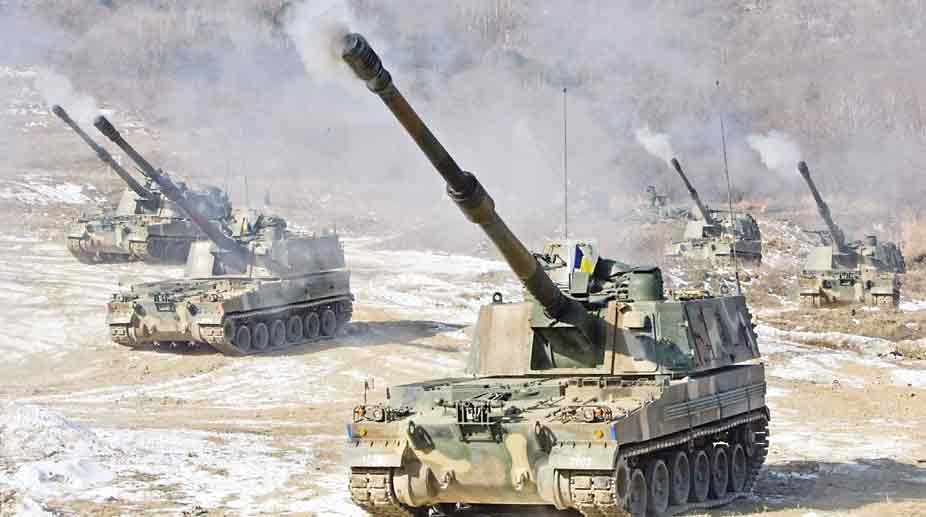The DRDO director general (BRAHMOS), Mr SK Mishra, while speaking during a session on ‘Role of DRDO in making India a world class defence hub’ justified high imports of military equipment. The reasons he offered were: existing security environment in the neighbourhood, wide weather variations in various parts of the country and our history of importing equipment. In his opinion, wide variations in weather from super-high altitude in Siachen and Sikkim to deserts and high humidity areas, made it difficult to concurrently develop equipment capable of being operated in these areas.
DRDO was established in 1958 with the merger of the Technical Development Establishment and the Directorate of Technical Development and Production with the Defence Science Organisation. It presently consists of fifty-two laboratories and employs over five thousand scientists. Its major success has been in the fields of rocket and missile science, with limited to no success in other fields.
Advertisement
This is possibly the first time that a DRDO head has justified import of military hardware. His statement on the volatile security environment in the region is nothing new, as since independence the security environment has never been secure. In fact, it took a dip for the worse after 1962. DRDO has been a part of this volatile security environment since its inception. This should have goaded it to strive harder for self-dependency, rather than compelling the nation to seek imports or in many cases even being compelled to accept equipment way below the military’s requirement.
The other justification of wide variation in climatic conditions is again lame, as it has never impacted imported hardware. If international arms manufacturers can develop equipment capable of operating in varying environments, even if does not exist in their nations, why has our own DRDO failed? This failure has led to India becoming a leading arms importer.
Factually the reasons for high imports are low technological base and in most cases inferior quality of products delivered by the DRDO, which are rejected by the armed forces. This has been compounded by lack of motivation of scientists, who are neither questioned for their performance nor taken to task to justify high funding with no major outputs.
Over the years, DRDO held sway over defence imports. The armed forces’ requests for capacity building by purchasing equipment were always routed through the DRDO, which then proposed to develop these in-house in a specific time frame, always using the pretext of saving vital funds. The recent instance of India cancelling import of Spike missiles in favour of possible development by DRDO is a case in point. In most cases the DRDO failed or produced equipment below par, compelling the military to operate without the desired capability.
The opportunity to purchase would already be past and the military suffered. It has been decades and till date the basic infantry weapon has not been correctly designed. The Tejas came after years of research, akin to the Arjun tank. The transfer of technology for the Bofors gun remained with them since its induction in 1984, however, was possibly discovered only recently. It has almost never adhered to its own laid-down timelines but has rarely been questioned.
There were occasions when it did deliver, Arjun tanks being a recent example. However, the equipment failed to meet the army’s requirement. The military wanted to reject the product, but under pressure from the government was compelled to place limited orders, which it did. Thus, Arjun tanks are presently held with hardly any armoured regiments. Similarly, the air force has rejected the next upgrade of the Tejas aircraft.
It is a fact that no nation can ever become a major military power on imported equipment alone. It must have a strong internal technological base. Imports can always be held to ransom, which has happened with India on numerous occasions. Shortage of spare parts of Russian equipment has led to low serviceability levels. US policies on provision of military hardware includes a clause of withholding supplies if they are employed against US interests.
Until recently, DRDO even discouraged private industry from participating in defence Research and Development (R and D). They therefore held a monopoly, which impacted capability and capacity development. They were never accountable for their failures nor even for promises made but unfulfilled. There has hardly been any questioning on their use of allocated funds and resultant developments. Failures are dubbed as ‘confidence-building projects’. Historically, the government was right when it created the DRDO, as the nation lacked technology essential for the defence forces. As the private sector grew, it could have been involved in defence R and D, which would have changed the scenario. However, for decades the DRDO kept it out. It is only recently that the government has opened this sector, changing the environment.
The government’s decision to support the DRDO, giving it preference over foreign vendors when it came to evaluation of military equipment, was akin to adopting a reservation policy. This never worked as DRDO knew they could push sub-standard equipment down the throat of the armed forces, simply because the scientific advisor to the Prime Minister and Defence Minister has a closer level of contact with decision-makers than service chiefs.
In rare instances, it is better to accept lower levels of in-house developed technology rather than import costly equipment, as it is our own and can be secured. This is feasible only in very limited cases, mainly communication equipment, but not across the board. It is for lack of faith in the capability of the DRDO to deliver that the armed forces are compelled to seek imported equipment, much against their wishes.
Therefore, the justification as given by the DRDO BRAHMOS chief is incorrect. He should have accepted the failure of his organisation, which by now should have mastered military technology, rather than expecting the military to accept sub-standard products.
The writer is a retired Major-General of the Indian Army











